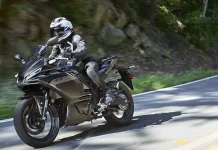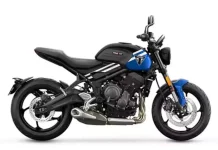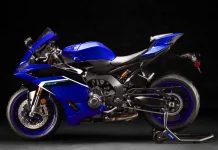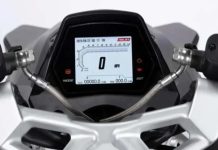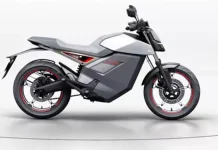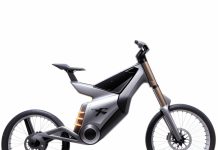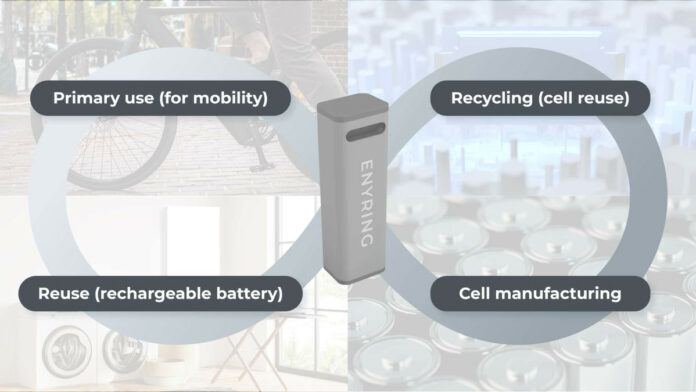Yamaha Enyring
Yamaha’s new venture, Enyring, marks a significant step forward in the electric vehicle (EV) sector, especially for electric motorbikes and compact urban electric vehicles. Yamaha’s strategy tackles key challenges in the electric two-wheeler sector, such as energy density and range anxiety, by introducing an innovative solution with swappable batteries and a subscription-based service.
Yamaha’s Enyring venture introduces an innovative swappable battery system for e-bikes and compact urban electric vehicles, targeting key challenges like range anxiety in the EV sector. It emphasizes sustainability through a closed-loop recycling system for batteries, enhancing eco-friendliness.

Electric Vehicles
Initially focusing on cycling-centric cities like Berlin and Amsterdam, Enyring could significantly influence urban electric mobility and potentially expand to other electric vehicles. This strategic move by Yamaha not only addresses EV enthusiasts’ needs but also sets a trend for future EV technology, representing a pivotal shift in integrating electric mobility into daily urban life and fostering a sustainable transportation culture.
Swappable Battery System
Yamaha’s Strategy with Enyring: An Active Analysis
- Implementing a Swappable Battery System: This approach directly addresses range anxiety by enabling riders to quickly swap depleted batteries for charged ones, minimizing the inconvenience and time associated with recharging.
- Establishing a Closed Loop System: Yamaha commits to sustainability by planning to recycle used batteries, addressing environmental concerns and ensuring efficient resource utilization.
- Targeting E-Bikes in Strategic Cities: Yamaha smartly starts with e-bikes in cycling-centric cities like Berlin and Amsterdam, leveraging existing cycling cultures to introduce and test new EV technologies.
- Considering Potential Expansion: Yamaha might extend Enyring’s services to other low-speed electric vehicles, possibly including its own electric lineup like the Yamaha NEO’s.
- Developing Infrastructure: Yamaha must invest significantly and coordinate with local entities to build and maintain a network of battery swapping stations, which is crucial for Enyring’s success.
- Influencing the Market: Yamaha’s establishment of a swappable battery infrastructure could pave the way for the development and adoption of similar systems for other electric two-wheelers.
E-Bikes
Challenges and Considerations in Yamaha’s Approach
- Managing Infrastructure Costs and Complexity: The construction and upkeep of swapping stations demand substantial investment and involve complex challenges, especially in urban areas with limited space.
- Addressing Standardization Issues: For wider success, a swappable battery system might need standardization across various manufacturers, presenting intricate regulatory and technical challenges.
- Ensuring Consumer Acceptance: The success of this model hinges on consumer willingness to adopt the subscription model for batteries.
- Adapting to Technological Advancements: Swappable batteries could become less relevant if future advancements in battery technology significantly improve charging speed and energy density.
Urban Electric Mobility
Yamaha’s introduction of Enyring represents a strategic and innovative approach in the electric vehicle (EV) industry, particularly focusing on electric motorbikes and compact urban electric vehicles. Here’s a key analysis of their strategy:
- Innovative Approach with Swappable Batteries: Yamaha’s implementation of a swappable battery system directly confronts range anxiety issues, allowing riders to exchange depleted batteries for charged ones swiftly. This system significantly reduces the inconvenience associated with battery recharging times.
- Sustainable and Circular Economy Focus: Yamaha’s plan to recycle used batteries through a closed-loop system highlights its commitment to sustainability and efficient resource utilization. This approach is crucial in addressing environmental concerns within the EV industry.
- Strategic Market Entry with E-Bikes: Yamaha’s initial focus on e-bikes in cycling-friendly cities like Berlin and Amsterdam leverages the existing cycling infrastructure and culture. This strategic choice provides an ideal testing ground for new EV technologies and promotes early adoption.
- Potential Expansion to Other Electric Vehicles: While starting with e-bikes, Yamaha may extend Enyring’s services to other low-speed electric vehicles in its lineup, indicating a broader vision for the application of this technology.
- Challenges in Infrastructure Development: The success of Enyring relies heavily on the development of a widespread and efficient battery swapping infrastructure. This requires substantial investment and collaboration with local authorities and businesses.
- Market Influence and Future Potential: Establishing a robust swappable battery infrastructure could significantly influence the development and adoption of similar systems for other electric two-wheelers, paving the way for broader EV adoption.
Yamaha’s Enyring initiative is a forward-thinking solution to some of the critical challenges in the EV sector, particularly for two-wheelers. However, its success will depend on the effective implementation of the infrastructure, consumer acceptance of the new model, and the ability to adapt to future technological advancements. This venture has the potential to significantly impact the EV industry, particularly in urban environments, and will be an important development to monitor in the coming years.
EV Range Anxiety
Yamaha’s launch of Enyring and its focus on swappable battery technology for electric vehicles (EVs), particularly e-bikes, has several implications for EV enthusiasts:
- Enhanced Convenience: The introduction of swappable batteries addresses one of the primary concerns of EV enthusiasts – range anxiety. Quick battery swaps make longer journeys more feasible and convenient, potentially increasing the attractiveness and practicality of e-bikes for daily use.
- Sustainability Appeal: The closed-loop system for recycling batteries aligns with the growing environmental consciousness among EV enthusiasts. This aspect might appeal to those who prioritize sustainability in their vehicle choices.
- Innovation and Technology Adoption: Enyring represents a significant technological advancement in the EV sector. Enthusiasts who are keen on the latest EV technologies might find the swappable battery system and its underlying infrastructure intriguing and a step towards future innovations.
- Expanded Use Cases and Accessibility: With the potential expansion of this technology to other low-speed electric vehicles, enthusiasts could see a wider range of EV options becoming more practical and accessible, especially in urban environments.
- Market Influence and Trends: Yamaha’s move could set a trend for other manufacturers to explore similar solutions, leading to more widespread adoption of EVs and potentially influencing future designs and technologies in the sector.
- Community and Urban Impact: The focus on urban environments, like Berlin and Amsterdam, might inspire a stronger community around EVs, fostering a culture of electric mobility and possibly influencing urban planning and policies favoring EVs.
- Potential for Enhanced Performance: As the technology matures, there might be improvements in battery performance, such as faster charging and longer life, which would directly benefit the user experience for EV enthusiasts.
Electric Vehicle Technology
For EV enthusiasts, Yamaha’s Enyring initiative represents not just an advancement in technology but also a potential shift in how electric mobility is integrated into daily life, especially in urban settings. It promises enhanced convenience, sustainability, and a broader acceptance of EVs, aligning with the interests and values of many in the EV community.
Conclusion and Future Outlook
Yamaha’s launch of Enyring is a progressive move that tackles several barriers to the broader adoption of electric two-wheelers. This initiative aligns with increasing environmental awareness and the push for sustainable transportation solutions. However, its success will depend on effective execution, consumer adoption, and adaptability to evolving technology and market demands.
The evolution of Enyring and its potential impact on the electric vehicle industry, particularly in the two-wheeler segment, is a critical area to watch in the upcoming years.
If you’re an EV enthusiast or interested in sustainable urban transportation solutions, keep a close eye on Yamaha’s Enyring initiative. This innovative approach, with its swappable battery system for e-bikes and urban electric vehicles, is poised to revolutionize the way we think about and use electric mobility in cities.
Stay updated on Enyring’s developments, especially its expansion and impact in cycling-friendly urban centers like Berlin and Amsterdam. Consider exploring how these advancements could benefit your daily commute or influence the broader electric vehicle landscape. Yamaha’s move towards a more sustainable, convenient electric future is something to watch and potentially embrace.


